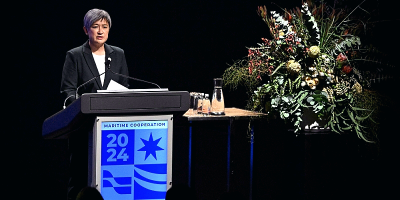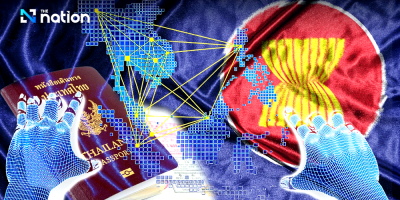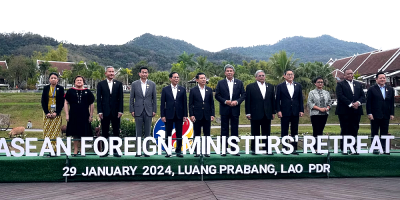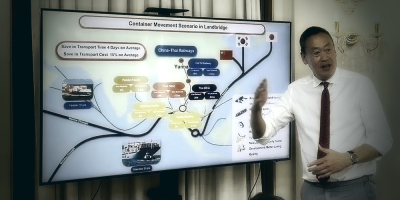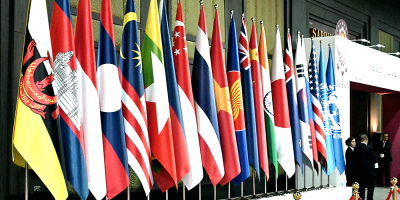
International cooperation is becoming increasingly difficult
International society has moved from the era of “cooperation” to the era of “division.”
China is viewed as the greatest threat to the United States in terms of economic and military power as well as different values and ideologies. To combat this threat, the US has introduced a succession of measures, beginning with punitive tariffs and including export control and tighter investment regulations.
The division in international society has been further complicated by the Russian invasion of Ukraine, followed immediately by the passing of the UN condemnation resolution demanding Russia’s immediate withdrawal.
More than 140 countries voted in favor of the resolution. However, as the invasion dragged on, many of those countries shifted to a neutral stance, due in part to Russia’s hold on the supply of key commodities such as energy resources, grains, and fertilizer.
The world is now largely polarized into democratic and authoritarian camps, each imposing economic sanctions and other penalties on the other.
In the midst of these challenges, Indonesia presides over the G20 and Thailand presides over the Asia Pacific Economic Cooperation (APEC).
However, the multilateral frameworks in which the aforementioned rivalries play out have become dysfunctional.
The conflict has already intensified at ministerial meetings in the lead-up to the G20 summit that will take place in the fall, with members unable to issue a joint statement.
Impending crisis in emerging and developing countries
Amidst the challenging situation of international cooperation, the world is threatened by inflation, soaring energy prices, difficulty in procuring fertilizer, intermittent interest rate hikes in the US and depreciation of local currencies due to capital outflows, and a debt crisis.
An economic crisis is imminent, particularly in vulnerable emerging and developing countries.
In April, Sri Lanka reached a financial impasse, suspending the repayment of external debts worth 51 billion dollars and declaring itself a “bankrupt country” (Prime Minister Ranil Wickremesinghe’s remarks at the Parliament on July 5).
The depletion of the treasury’s dollar reserves resulted in an interruption of energy imports, plunging the country into its worst economic crisis since gaining independence.
The government’s mismanagement of the economy sparked public outrage, triggering a political crisis.
The case of Sri Lanka is just the beginning. IMF Managing Director Kristalina Georgieva has warned that “60% of low-income countries are at or near debt distress,” stoking fears that the crisis will have a domino effect.
An even more serious crisis is looming and there is an urgent need for international cooperation.
Catalyst function of Asean
In a divided international society in which multilateral frameworks are dysfunctional, Asean can act as a “buffer” between the two camps or serve as a “catalyst.”
Asean’s experience of the 1997 Asian Financial Crisis makes it well placed to be the voice of emerging and developing countries.
The “catalyst” function of Asean has been recognized for some time.
Cooperation between Japan, China, and South Korea is hampered by political tensions and historical issues.
In the economic sphere, the Japan-China-Republic of Korea Free Trade Agreement has failed to produce results despite having just entered its tenth year since the start of negotiations.
In contrast, Asean+3 (Japan, China and South Korea), with Asean playing a catalyst role, has been cooperating effectively in areas such as finance and rice stockpiling.
The Regional Comprehensive Economic Partnership Agreement (RCEP) also came into force in January 2022.
The stage is already set for Asean to serve as a catalyst for international cooperation. Asean provides a platform for dialogue with nations outside the region. Japan, the United States, China and Russia will also participate in the East Asia Summit (EAS).
If Asean can help eliminate this division that exists in international society, the organization’s standing on the global stage is bound to be enhanced.
What is the aim?
The experience of the collaborative response by Asean and dialogue partners at the time of the Asian Financial Crisis will be immensely useful.
At that time, Asean dealt with a foreign currency outflow and an increase in non-performing loans, as well as designing a safety net, with the support of dialogue partners.
Asean is a group of emerging and developing countries. To date, Asean has formulated and implemented policies and measures following income levels, culminating in the establishment of the Asean Economic Community (AEC).
Even in the early stages of the COVID-19 pandemic, Asean formulated the Hanoi Plan of Action, under which it pledged to refrain from imposing unnecessary non-tariff measures and to promptly inform all member states on trade-related measures, including the application of export prohibition or restriction and the removal of export prohibition or restriction on essential goods such as food products, medicines, and medical and other essential supplies.
Based on the Hanoi Plan of Action, the targeted goods could be extended to include a wider range of food as well as energy sources, with the aim of securing agreement at forums such as the EAS (East Asia Summit).
Recent years have seen some Asean member countries prioritize their individual interests over those of the region as a whole.
For Asean to serve as a catalyst, the ten member countries at least would need to act collectively with “one voice,” and the views of emerging and developing countries would need to be gathered.
This would enable Asean to wield greater bargaining power against both democratic and authoritarian camps.
Asean can do this because of its neutral stance and its membership of emerging and developing countries.
Free trade has allowed Asean to contribute to the development of global supply chains, which has resulted in the region’s own economic growth.
In this sense, it is the region that has reaped the greatest benefits from free trade.
The time has come for Asean to take action in order to maintain a free and open trade environment.
(Seiya Sukegawa is Visiting Professor at Thai-Nichi Institute of Technology, Thailand and Professor at Kokushikan University, Japan.)
ADVERTISEMENT
ADVERTISEMENT






